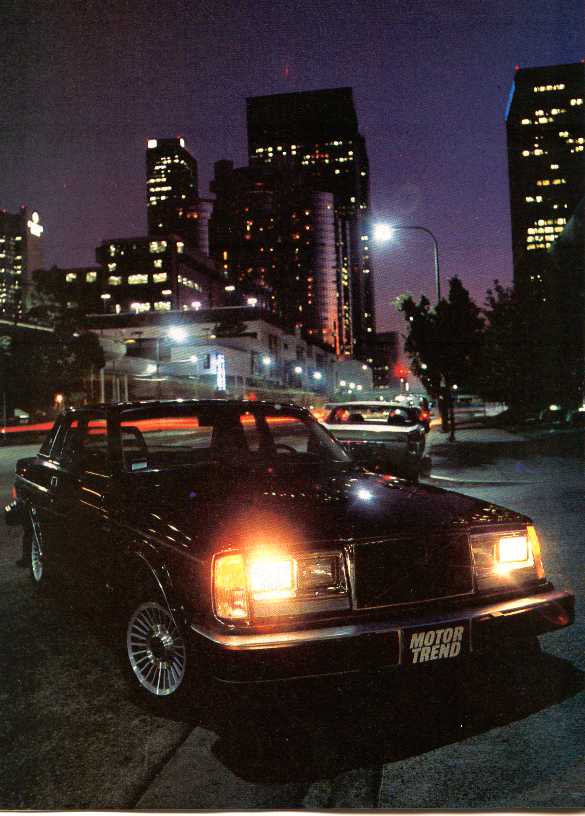



![]()
 For longer than it might care to admit. Volvo has suffered from an insidious
kind of image problem here in America.
For longer than it might care to admit. Volvo has suffered from an insidious
kind of image problem here in America.
Perhaps referring to it as a lack of image problem would be more
descriptive.
On one hand, words like safe, comfortable, and long-lived jump to
mind when one endeavors to describe its car lines.
However, terms like stylish, exciting, and unique are far less likely
to be linked with the products of this Swedish auto maker.
The GT notwithstanding, there is one notable exception to Volvo's
basic anonymity axiom. It is known as the Coupe.
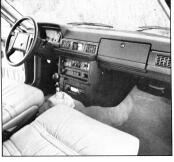 In the mid-1970s, AB Volvo contracted with the Italian master Niccio
Bertone to have his renowned carrozzeria create an image car for the marquee.
In the mid-1970s, AB Volvo contracted with the Italian master Niccio
Bertone to have his renowned carrozzeria create an image car for the marquee.
Volvo requested a limited edition 2 + 2 that would be built on its standard production platform.
The resulting cross-cultural exercise offered the exclusivity of
custom coach work and luxury mechanicals.
The Bertone Coupe was introduced in 1978. Then, it was called the 262C.
Produced in a series of 1300, the designer models were graced with
a completely redesigned greenhouse that featured a more steeply raked windshield
and a crisp, angular roofline that was 3.0 inches lower than any other
Volvo.
The V-6-powered Coupe's were originally offered only in silver with
a black vinyl top and matching leather interior. The present version, now
formally rechristened the Coupe, has benefitted from a series of modest
upgradings and mercifully has jettisoned the padded top from its standard
package.
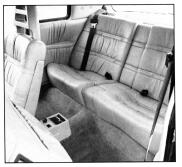
Bertone plans to build about 2000 Coupe's in 1980; three quarter
of them will be destined for the American market.
All will be hand assembled in Turin, using stamping and sub-assemblies
shipped from Volvo's home base in Gothenburg.
The Coupe's distinctive chopped top starts out as three separate
pieces of metal that are jig welded and hand filed (no lead or bondo here,
friends) to perfection before being attached to the rest of the body. Using
a series of specialized techniques, the remaining mechanicals are then
installed along with the interior package.
As one would expect, the Coupe has only a minimal option list. the
no-cost selection encompass a choice of three exterior colors, a black
or tan leather interior, and a 3-speed automatic or 4-speed manual transmission
with overdrive.
Extra-cost items are pretty well confined to a limited-slip differential
and several ascending grades of radios and cassette units. Standard equipment
is plentiful and includes the best of the GLE features. Besides air conditioning
AM/FM stereo radio, and power windows, mirrors, and door locks, there are
also a number of extra conveniences, including a cruise control and deluxe
interior lighting with an auto-fader and twin mini-spotlights.
If the truth be known, some cross-country drives aren't looked upon
with much enthusiasm. That was assuredly not the case in this instance.
Even in the early afternoon sunlight, the Coupe's slightly sinister silhouette
stood out markedly from the rest of the cars in the lot at Volvo Rockleigh.
New Jersey, facility.
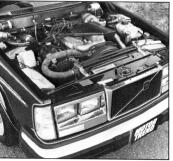 Unmistakable proud, almost defiant, it dared us to test its mettle
over several thousand miles. The hand-crafted luxury passenger compartment
beckoned with the intensity of a siren's song, and we quickly capitulated
to its call. This car was of particular interest because it is one of only
100 U.S. Coupes that will be fitted with manual transmissions. This "performance"
variant also carried a 3.73 : 1 rear gear instead of the 3.54 : 1 cog used
with the automatic.
Unmistakable proud, almost defiant, it dared us to test its mettle
over several thousand miles. The hand-crafted luxury passenger compartment
beckoned with the intensity of a siren's song, and we quickly capitulated
to its call. This car was of particular interest because it is one of only
100 U.S. Coupes that will be fitted with manual transmissions. This "performance"
variant also carried a 3.73 : 1 rear gear instead of the 3.54 : 1 cog used
with the automatic.
Prior to embarking on our 3100-mile trek West, we give the car a
quick visual once-over. Even at a glance, it was obvious that the overall
level of construction was high. Body panels and trim fit together well,
inside and out; and the doors and trunk shut with an airtight seal. The
only questionable things that we noted were a bit of orange peel in the
paint and some small, ill-fitted pieces of channel that covered the butted
seams on the brightwork surrounding the windows.
Inside, the real giveaway to the Coupe's heritage was the dash,
which is standard GLE issue. The rest of the interior was strictly an exercise
in opulence. The seats, door panels, headliner, and sun visors were covered
in fine, handstitched furniture-grade leather. The side panels featured
a matched set of polished elmwood inserts, and the carpeting extended to
the trunk. Even the tool kit came in its own little carpet bag. The custom-upholstered
seats, although wider than the standard Volvo units, possessed the same
fully reclining backs and adjustable lumbar supports, plus heating elements
for use in the cold climates.
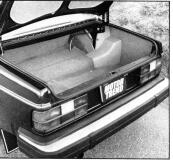
In order to offset the loss of head room, the bottom cushions were mounted approximately 2.3 inches lower in the Coupe. Volvo doesn't offer an adjustable steering column. Consequently, the driver's seat was fitted with a pair of controls to allow the adjustment of both height and the rake.
Like the GLE, the Coupe calls upon the lightweight aluminum-alloy SOHCV-6 that was jointly developed by Peugeot, Renault and Volvo for power. The engine is fed by Bosch CIS electronics fuel injection and relies on a Lambda-sond 3-way system to make it past the smog requirements in all 50 states. The designation on the 2849cc powerplant has been changed from B27F to B28F, reflecting the presence of slightly larger cylinder bores in the 1980 model. Thanks to the displacement increase and some minor, and exhaust manifolds, the horsepower rating was upped from 125 to 130, and the maximum torque raised from 146 to 153 pounds-feet. The V-6 always started quickly and easily. It revved to its 6000-rpm redline with a minimum of protest, but even the extra helping of fire-wall sound deadener couldn't fully conceal the additional decibel count that accompanied any excursions into the upper range.
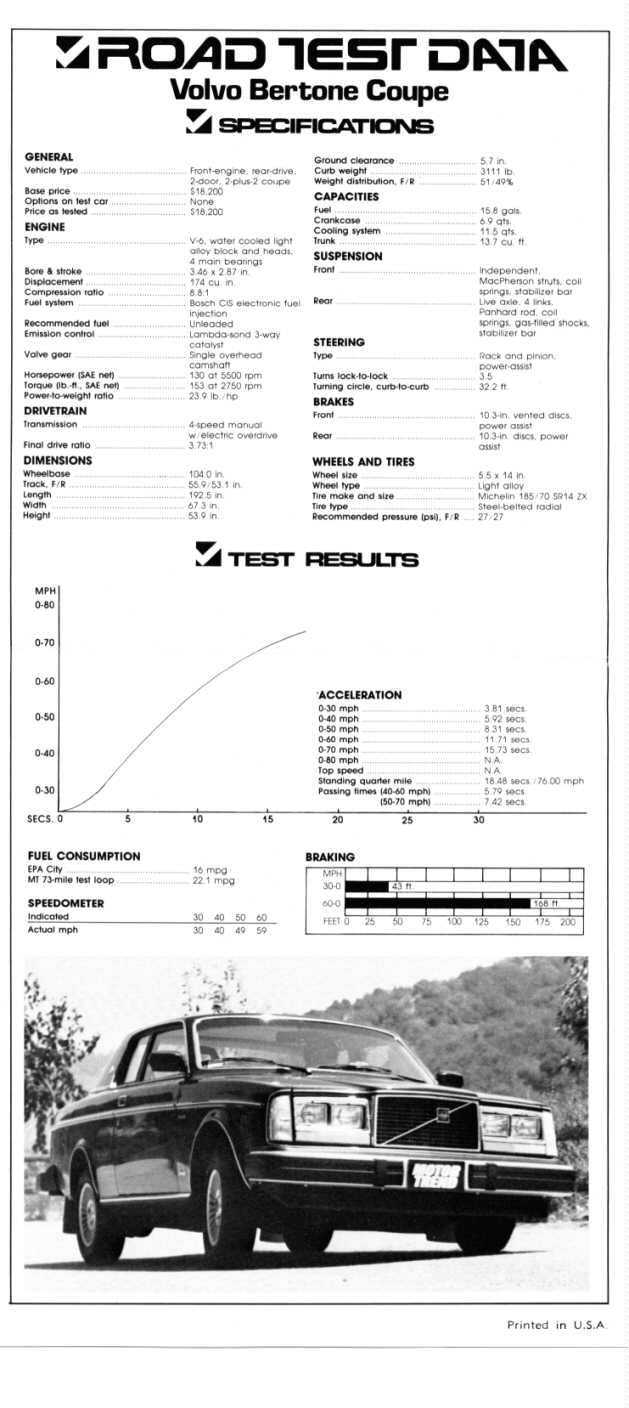
The Coupe is no lightweight, scaling over 3300 pounds with fuel
and driver. While the 2.8-liter V-6 pulled very evenly and smooth, permitting
the use of the electric overdrive even at the very bottom of its torque
band, the engine still left one with a seat-of-the-pants feeling that it
was severely hampered by its U.S. smog hardware. Besides the normal interstate
motoring our sojourn covered a fair portion of city and country roads as
well as a run trough the Rockies. Average mileage ranged from a 16.4-mpg
low to a 27.0-mpg high. The EPA city rating on the Coupe is 16-mpg, and
on our test loop, it turned in a credible 22.1-mpg figure. Running an 18.48-second/76.00-mph
quarter mile, with an 11.71-second 0-60-mph best, certainly puts the Coupe
in the middle of the luxury touring thicket. Save for occasional extended
grade. downshifting was also a infrequent occurrence. But the raw-power
freaks are going to be disappointed, because even linked to the manual
transmission, the V-6 delivers only adequate performance. Any perceived
engine anemia was further magnified by the transmission and clutch, which
also arrived intact from the GLE. The matchup is fine if you're inclined
to use 3000 rpm as a shift point. The further one ventured beyond, the
less satisfactory things became. The shift lever was well positioned, but
the linkage possessed only a modicum of feeling or precision the biggest
weakness lies in Volvo's cable-operated hydraulic clutch. It made flat
shifting impossible and caused brisk gear changes to the accompanied by
rather irritating slip-bog-lurch sequence. Given the true nature of the
Coupe and the miniscule number that will be build with standard transmissions,
this can hardly be viewed as a major failing. But it does reinforce the
contention that the Coupe relies far more on appearance than performance
to score its points. Aside from some minor tuning of the spring rates,
the Coupe uses all the stock GLE suspension components, with translates
into MacPerson struts with a stabilizer bar up front, and a live rear axle
suspended by coils and located by four lateral links and a Panhard rod.
The Coupe is not exactly the car we would take out in search of the
ultimate curve; but we found that, like other Volvo's, it possessed a respectable
handling envelope that was far closer in character to a European then an
American luxotourer. It seemed reasonably at home on all kinds of roads.
the car felt massive to be sure and surprisingly exhibited a pronounced
desire to under steer whenever pressed into a corner. But the excellent
51% / 49% weight distribution helped to offset some of the effects of its
sheer bulk. And Volvo's unique front-end geometry and ideally power-assisted
rack-and-pinion steering made transmission to a neutral attitude a simple,
predictable operation. A mere flick of the wheel would swing the rear and
around to center, and it would elicit only moderate squeals of complaint
from the 180 / 70 SR 14 Michelin ZX steel radials.
In town, the Coupe's 32.2-foot turning circle made more fundamental
maneuvring a breeze. Stopping chores were handled by four 10.3-inch power
disc brakes, the front pair being of the vented variety. The pedal was
a trifle soft, but well modulated. While the brakes were inclined to lock
when hot, the always provided fade-free, straight-arrow stops and hauled
the car down from 60 mph in 168 feet. the best time to make a evaluation
on a cross-country trip is generally after a full day behind the wheel.
The bucket from one's may have been down a tad softness and lateral support, but they were still orthopedically designed and delivered the same level of comfort that we've come to expect in a Volvo. The complete absence of squeaks and rattles was also quite evident, with the most noticeable noise being made by wind passing over the outside rearview mirrors. The only item that really left anything to be desired was the cruise control. Cruisers aren't very popular in Sweden, and if this units is at all representative, we can see why. The off/on resume switch was awkwardly mounted on the left-hand control stalk, and the speed was set by depressing button on the end of that same appendage. This Arrangement proved difficult to operate and exceedingly sensitive to the kind of "touch" that it would respond to Worst of all, the control tended to pick up 2-3 mph over the speed that was originally selected and occasionally caused the car accelerate by a similar amount when the turn signals were activated. On a vehicle that was otherwise so well suited to cross-country duty, this became particularly irksome. Just after our arrival in Los Angeles, the Coupe also developed a miner electrical short in the electric seat heating circuit. Tracking down that elusive gremlin required several trips to our local dealer.
Which at last brings us to the burning question:
Having spent a week on the road with the Coupe, we found it very attractive and an affordable alternative to the likes of a 633CSi, 300CD, or a 928. Although it carries a relatively modest $ 18.200 price tag, the Bertone Coupe offers exclusivity not found in many more costly exotics, plus the full complement of amenities and reliable Volvo underpinnings. There's no denying that some degree of sportiness and ostentation has been sacrificed in deference to cost. But given Volvo's annual output of just over 300,000 vehicles, the concessions are understandable; and more important, they do nothing to detract from driving the car in day-to-day circumstances. The Coupe struck us as an admirable blend of luxury and practicality. It's the unsung exoticar for the hedonist on a budget.
![]()